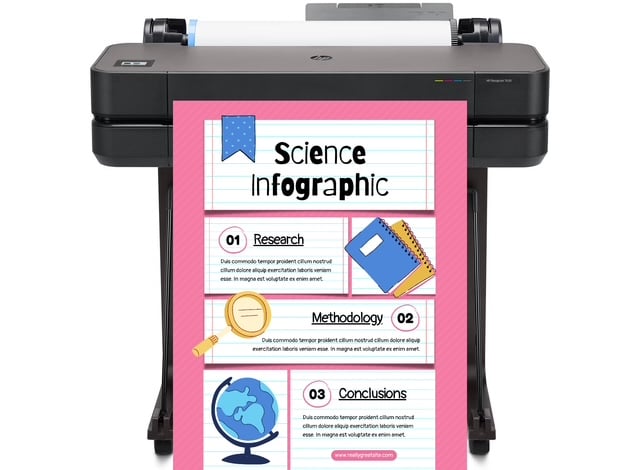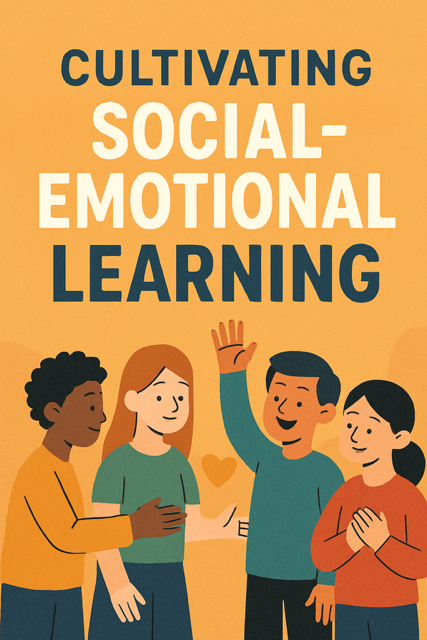Social‑Emotional Learning (SEL) is more than a buzzword—it’s a powerful approach that empowers children with vital skills such as self‑awareness, empathy, emotional regulation, and responsible decision‑making. When nurtured both at home and in school, SEL becomes the foundation for strong mental health, successful relationships, and lifelong well‑being. This post dives deep into how parents and educators can cultivate SEL environments, offering practical strategies, success stories, and evidence-based insights.
1. What Is Social‑Emotional Learning—and Why It Matters
Definition: SEL is the process through which children and adults acquire and apply the knowledge, attitudes, and skills necessary to:
- Understand and manage their emotions
- Set and achieve positive goals
- Feel and show empathy for others
- Establish and maintain healthy relationships
- Make responsible decisions
Why It Matters:
- Academic gains: Students with strong SEL skills tend to perform better in school—with higher grades, improved attendance, and reduced disciplinary issues.
- Mental health boost: SEL competencies help reduce anxiety, depression, and stress.
- Life readiness: Emotional intelligence is key in workplace environments and personal relationships, equipping children for success beyond school.
2. The 5 Core SEL Competencies
SEL is built on five core competencies defined by CASEL (the Collaborative for Academic, Social, and Emotional Learning):
- Self‑Awareness: Recognize one’s emotions, strengths, values.
- Self‑Management: Control impulses, manage stress, stay disciplined.
- Social Awareness: Empathize with others, understand diverse perspectives.
- Relationship Skills: Communicate clearly, cooperate, resolve conflicts.
- Responsible Decision‑Making: Make caring and constructive choices.
Each of these competencies can be practiced daily at home and in the classroom.
3. Cultivating SEL at Home
Parents play a critical role in reinforcing SEL. Here’s how to embed these competencies into everyday life:
3.1 Model Healthy Emotions
- Be transparent: When you’re feeling stressed or sad, share that out loud: “I’m feeling frustrated because…”
- Label your feelings: Help your child say, “I feel angry,” or “I feel lonely.”
3.2 Build Emotion Vocabulary
- Word wall: Use a poster of emotion words—happy, confused, excited, disappointed—and point to them during conversations.
- Feelings check‑ins: At breakfast or bedtime, ask, “How are you feeling today?”
3.3 Teach Emotional Regulation
- “Time‑in” vs “Time‑out”: Teach your child a calming space (with pillows, books, sensory toys) rather than isolation.
- Breathe together: Practice deep, four‑count inhales and six‑count exhales—make it fun by pretending to blow bubbles!
3.4 Role‑Play Social Scenarios
- Use stuffed animals to act out: “What would you do if a friend took your toy?”
- Scenario cards: Draw or write prompts (“Your sister won’t share. What do you say?”) and brainstorm together.
3.5 Family Meetings & Decision‑Making
- Give genuine voice: Let children help choose family activities, meals, or screen‑time rules.
- Reflect on outcomes: After a decision, talk through what worked well—and what didn’t.
3.6 Praise Effort, Not Just Results
- Focus on process: “You worked hard on that drawing!” instead of “It’s perfect.”
- Emphasize resilience: Celebrate moments your child sticks with frustration until they succeed.
4. Cultivating SEL in School
Educators are the architects of SEL ecosystems in classrooms. Here’s how teachers and schools can weave SEL into daily routines:
4.1 Morning Meetings & Circles
- Greeting time: Start the day with every student greeting classmates by name—strengthening respect and connection.
- Check‑in rounds: A short emotion check-in (“One word to describe your mood”) builds awareness and belonging.
4.2 Explicit SEL Instruction
- Lessons: Dedicate 10–15 minutes per class to teach skills like empathy, emotion regulation, and conflict resolution.
- Use CASEL-aligned curricula like Second Step, RULER, or MindUP that offer scripts, videos, and role-plays.
4.3 Integrate SEL Across Subjects
- Reading & stories: Discuss characters’ emotions and motivations. Ask: “How do you think they feel?”
- Group projects: Assign rotating roles (leader, mediator, researcher) to teach collaboration and problem-solving.
4.4 Class Agreements
- Co-create a social contract with rules like “Use kind words,” “Wait until others speak,” and “Take responsibility.”
- Revisit during redirects: “Remember—our classroom agreement is…”
4.5 Mindfulness & Brain Breaks
- Add short mindfulness sessions: “Let’s pause and breathe” mid-lesson to help kids re-center.
- Brain breaks: Quick, fun activities like stretching or humming five seconds when focus wanes.
4.6 Conflict Resolution Protocols
- Use peer mediation: A neutral student or teacher helps two peers find a compromise.
- Teach “I” statements: “I feel upset when you…” This avoids blaming and opens dialogue.
5. The Power of Family–School Partnerships
SEL thrives when both worlds—home and school—work in harmony:
- Communication tools: Daily apps, teacher emails, or SEL journals keep parents in the loop.
- Workshops for parents: Run short sessions on SEL skills, emotion coaching, and behavior reinforcement strategies.
- SEL events: Host empathy-themed potlucks or “kindness carnivals” where families practice SEL together.
- SEL Showcase nights: Students present SEL projects—whether posters, skits, or video reflections.
Such collaboration fosters consistent expectations and reinforces SEL across environments.
6. SEL Techniques You Can Use Today
Here are 10 quick, actionable SEL ideas to try tomorrow:
- Emotion Check-In Jar: Kids drop a colored token in a jar (green = happy, red = frustrated) so you know how they feel.
- “Feelings Playlist”: Create music selections that match moods—uplifting, calming, giggly—and listen when feelings shift.
- Thankful Thursday: Each family member shares something they’re grateful for before dinner.
- Mindful Moments: Use alarm reminders to pause, breathe, and reset your day.
- Good News Board: Write and display positive things happening in school and outside.
- Emotion Thermometer: Create a visual scale showing rise in emotion—and strategies for cooling down.
- Literary SEL: Read a picture book, then invite kids to identify what a character felt and why.
- Walking Meetings: Talk about feelings or resolve conflict while walking around the block.
- Empathy Interviews: Assign kids to ask peers two questions—“What’s a time you felt proud?”—then reflect back.
- Weekly SEL Journals: Kids draw or write about one thing they did well that involved someone’s feelings.
7. SEL Benefits Backed by Research
Here’s a compelling look at SEL’s impact, drawing on peer-reviewed studies:
- Students participating in SEL programs show an 11‑percentile-point gain in academic performance, reduced conduct issues, and fewer emotional issues .
- Longitudinal data indicate that individuals with strong SEL in childhood self-reported greater life satisfaction, lower rates of substance abuse, and stronger employment prospects .
These metrics aren’t pie-in-the-sky; they show tangible differences we can influence.
8. Overcoming Common SEL Challenges
- Busy schedules?
- Use 3‑minute moments: breakfast chats, car‑ride reflections, nightly wind‑downs.
- Skeptical teachers/parents?
- Emphasize how SEL supports academic outcomes, discipline, and classroom climate.
- Diverse emotional needs?
- Use STEPPED COPING strategies—Tailor support, Encourage, Pause, Partner, Evaluate, Decide—and adjust for each child’s readiness.
- Inconsistent follow‑through?
- Build habits: link SEL to everyday routines (e.g. “After brushing teeth, let’s share highs/lows”).
9. Measuring SEL: Data That Drives Improvement
To know if SEL is working, use simple assessment tools:
- Pre/post surveys: Ask kids to rate statements like “I can calm myself when frustrated” on a 1–5 scale.
- Teacher observation logs: Track incidents resolved with words instead of anger, or times kids showed empathy.
- Parent feedback: Use quick polls: “Have you seen your child use healthy breathing at home?”
- Celebration rituals: Review SEL “wins” weekly—like using an “I” statement or restoring a friendship.
These measures help tailor instruction and celebrate leadership.
10. SEL Success Stories
- The Caring Classroom Project, a 3‑year study, found a 40% drop in bullying and a 20% uptick in student feelings of safety—all rooted in SEL school-wide practices.
- The Happy Families Initiative paired SEL webinars for parents with simplified lessons at school. After one semester, even students with test anxiety reported feeling “calmer before quizzes.”
- CASEL’s SEL Framework – Research‑based guide to structuring SEL.
- Second Step Curriculum – Includes scripted lessons for grades Pre‑K through middle school.
- MindUP Program – Mindfulness‑infused lessons with neuroscience foundation.
- “RULER Approach” by Yale – Tools for emotional intelligence and class climate.
- Emotion Wheel Printables – Great for home check‑ins and classroom displays.
12. Final Word: Why Every Teacher and Parent Should Care
Social-Emotional Learning (SEL) Isn’t Optional—It’s Foundational.
In today’s world, helping children feel seen, heard, and emotionally supported isn’t just a bonus—it’s essential. When students are equipped with the tools to understand and manage their emotions, they don’t just do better in school; they become more empathetic friends, resilient problem-solvers, and engaged community members.
The ripple effect of SEL goes far beyond the classroom. It creates compassionate learning environments, more peaceful homes, and, ultimately, a generation better prepared to navigate life’s challenges with confidence and care.
Start Small. Start Today.
You don’t need to overhaul your day to begin. Choose one simple SEL practice—like introducing emotion vocabulary, starting a daily mindfulness moment, or hosting a short family meeting—and commit to using it every day for two weeks.
Watch what happens.
Notice the subtle but powerful shifts in behavior: calmer reactions, clearer communication, increased self-awareness. These small, consistent efforts lay the groundwork for emotional intelligence, resilience, and stronger, more meaningful relationships—for life. Also, don’t forget about the importance of visuals in the classroom to help foster SEL.
The future needs emotionally strong kids. Your daily actions help grow them.
Cultivating SEL at home and school is a gift. When we teach children how to learn about their feelings—and how to empathize and connect—we equip them for academic success, healthy relationships, and emotional health.
Thank you for prioritizing SEL—share this post with a friend or colleague who wants to help young hearts and minds flourish.

